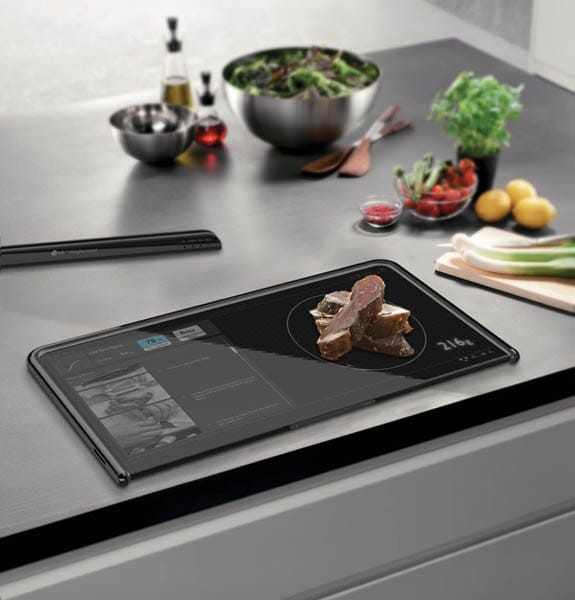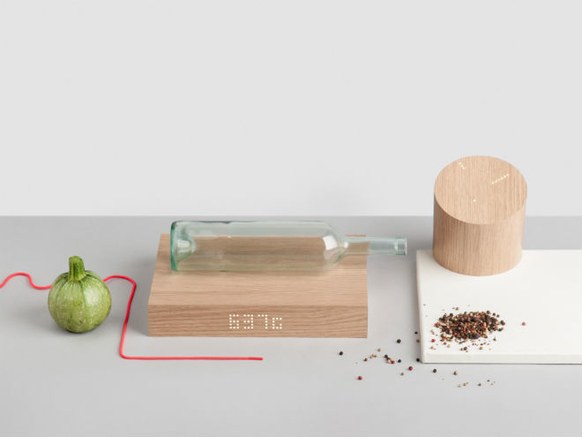IoT & Wearables - Smart Kitchen

We have already covered various areas of the IoT & wearables industries in this content series, and now we will be focusing on various parts of the home. The smart kitchen is one of the most exciting parts of the industry and is where a lot of the initial focus of IoT had been placed.
Though some use the example of the smart fridge to demonstrate how extravagant and out-of-touch the tech world can get, the connected and smart kitchen has a lot of real potential.
And while I definitely won’t argue that some concepts are ridiculous, innovation in this industry sometimes requires ridiculous ideas to create fantastic products.
What will the smart kitchen of the future look like?
As it’s often the case with the IoT & wearables industries, the possibilities for the smart kitchen are truly endless. “Endless possibilities” is a sort of catchphrase in the tech industry, but it’s rarely as applicable as it is with IoT and wearable devices.
Practically every part of the kitchen, from the fridge to the oven and even smaller appliances and devices can or should be able to benefit from smart features. The changes don’t even have to be dramatic, though they certainly will be at times.
When Panasonic demonstrated its own vision for the connected home back in 2015, their concept of a smart kitchen was a complete reimagining of the world of cooking. I invite you to watch the video below, though you will need to get past the staged nature of it all.
Panasonic put a camera everywhere: in the fridge, the oven, and even the dishwasher. While they went overboard with that, they did demonstrate some other nifty concepts, including a cooking area that could recognize different cookware, measure weight, and apply heat in a smart way.
But again, you don’t have to reimagine every single part of the kitchen. Thingk’s crowdfunding campaign in 2014, for instance, showcased two beautifully designed products with smart features that were actually useful.
More precisely, the CLOGK was essentially a chunk of wood that was also a clock and a timer, and the GKILO looked like a pretty wooden cutting board but was actually a digital scale. Pictures of both are below for your reference.

Connecting every appliance
The idea of everything in your house being a part of an ecosystem is equal parts frightening and exciting. Some will definitely question whether you need a camera with optical recognition software inside your fridge, while others will be delighted.
Your smart kitchen will, of course, be connected to the cloud and thus to your mobile devices. Forgot whether you have milk or not? Check your fridge’s camera via your smart home app. Don’t know what temperature to cook chicken in? Let your smart oven decide.
More than that, the devices will also be able to communicate between themselves. Take a few ingredients out of the fridge, for example, and your smart induction hob may suggest a few recipes it can quickly whip up with them.
Changing cooking and eating or making things easier?
Many argue that adding smart devices to the cooking process removes a lot of its charm and a lot of the skill that masterful cooking requires. The Anova precision cooker, for example, will allow you to cook at just the right temperature, every single time, without a worry in the world.
Similarly, a slow cooker that’s connected to your phone will allow you to change the heat settings, check on the temperature, view the running cooking time, and even turn it off completely while you are just leaving the office.
On the eating side of things, the SmartPlate makes it far easier to count your calorie intake, a process which is already made easy by apps like MyFitnessPal. For someone like me who likes appreciates statistical analysis in all its forms, such devices are simply incredible.
There’s no end to the kind of devices that can be turned from “dumb” to smart. Plates, forks, coffee makers, digital recipe books, a connected digital screen so you can leave notes to your kids, everything and anything you can think of.
Conclusion
The smart kitchen is a particularly interesting area because the act of cooking varies so greatly between cultures. For those with fast-paced jobs and long commutes, cooking is often unthinkable, for example, whereas others do not go a single day without a home-cooked meal.
What the smart kitchen will do is basically rethink some of the ways through which we approach cooking and food in general. It has the potential of being a true revolution, allowing for the disruption of a practice that has roots in ancient times yet is in constant motion.



